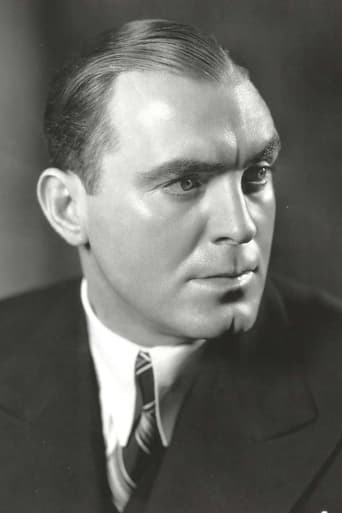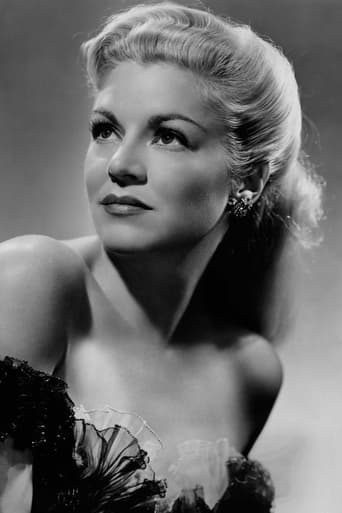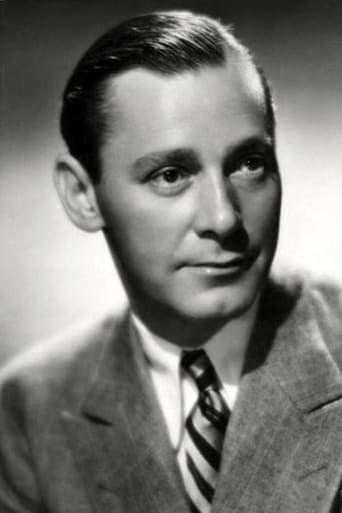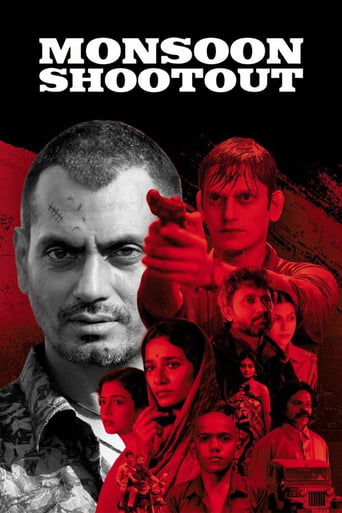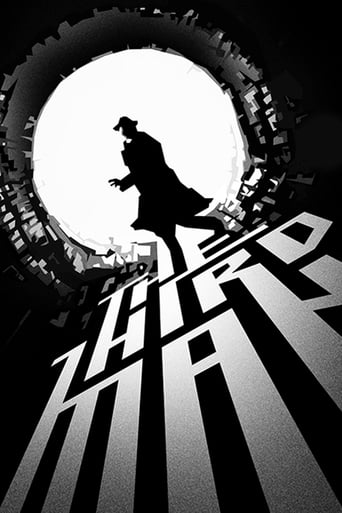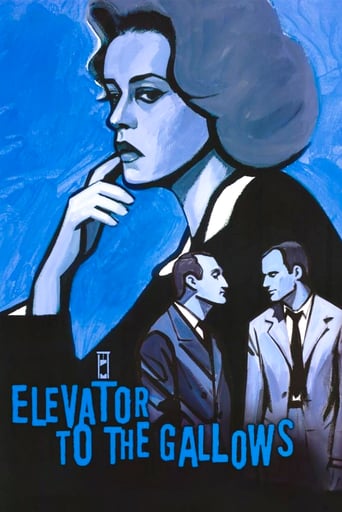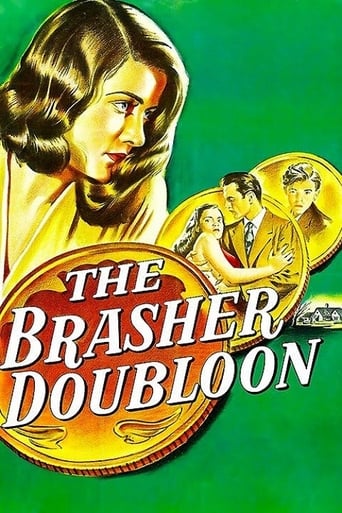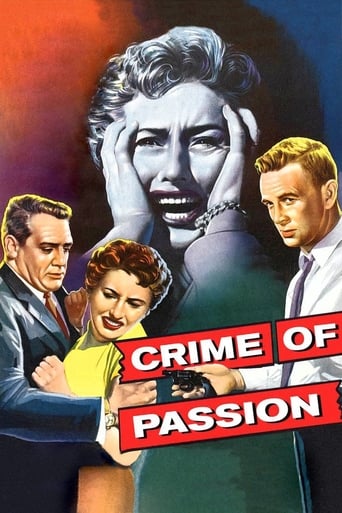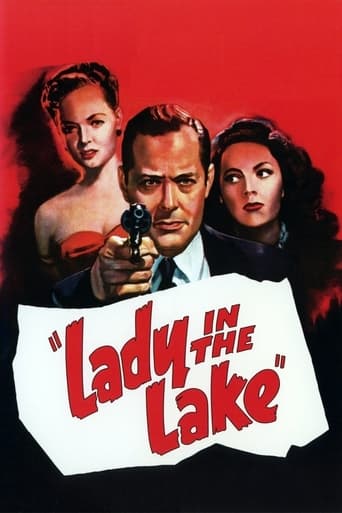
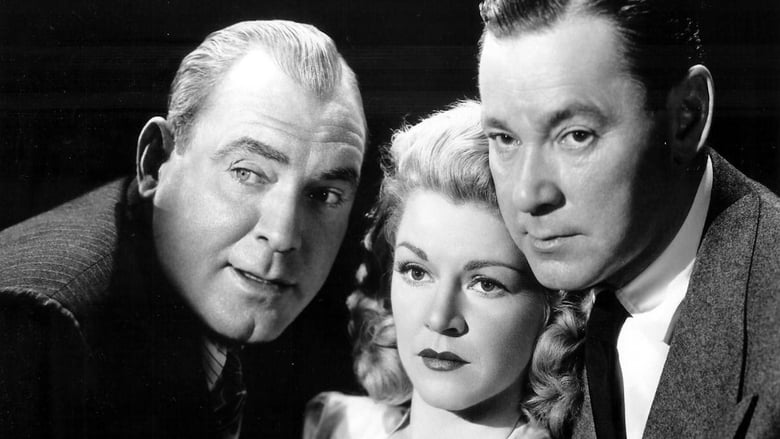
Crack-Up (1946)
Art curator George Steele experiences a train wreck...which never happened. Is he cracking up, or the victim of a plot?
Watch Trailer
Cast


Similar titles
Reviews
In no other American film noir does art and the museum play such an important role. The main character is an art expert, and significant themes include Old Master paintings, forgeries, and even the use of x-ray technology. Granted, Fritz Lang's "Scarlet Street" (1945) involves the entanglements of an artist (Edward G. Robinson, an important real-life art collector) and mistaken identities. But in Crack-Up the institutional art world––museums, curators, and collectors—are integral to the plot. This film is also notable for representing a museum professional as a tough, noir male lead. His name is, fittingly, "Steele" (Pat O'Brien). When he powerfully hits an arcade punching bag, one character observes, "Not bad for an art critic." O'Brien's soft-spoken intensity and mature demeanor are perfect here. Similarly, the museum is shown here as a foreboding and noir-ish place, an unusual treatment; recall the bright, Technicolor San Francisco Legion of Honor in Hitchcock's "Vertigo." In one scene in "Crack-Up," the shadow of an ancient figural sculpture looms like a spider over the guilty museum director. The opening of the film, set to the shrieking tones of Leigh Harline's discordant score, shows a train speeding right at the viewer. In rapid succession we see Steele's crazed face, then his foot kicking through the glass door of a museum. Wrestling with a policeman, the pair jostles an ancient classical statue—a torso, surreal in its own way––which nearly crushes Steele as it shatters on the ground. In the background we see the well-known "Farnese Hercules" (216 AD) in a hall of classical statuary. The most telling scene for art in America at this time occurs early on, when Steele is shown lecturing in the museum's galleries. He wonders why art gives American viewers "an inferiority complex," and that "face to face with a painting we shuffle our feet and apologize." He continues: "Why apologize? If knowing what you like is a good enough way to pick out a wife, or a house, or a pair of shoes, what's wrong in applying the same rule to painting?" He then shows the crowd Jean-François Millet's "The Angelus" (1859), a hugely popular nineteenth-century painting of two peasants pausing from their fieldwork to pray. The audience makes reverential noises, but gasps in horror when he pulls back the cloth over a contemporary Surrealist painting. The picture (uncredited) resembles Salvador Dalí's "Soft Construction with Boiled Beans (Premonition of Civil War)" (1936). Steele calls it "nonsense" and equates modern painters with forgers. Both are dangerous, he claims, as "good technicians with nothing to say." In the 1940s Americans were still bewildered by European modernist painting including Cubism, Constructivism, Dadaism, and Surrealism. Intriguingly, at this moment, the American Abstract Expressionists were just picking up steam. A heckler (the great Shimen Ruskin) suddenly challenges Steele. He vociferously defends modernism, distinctly foreign in his thick accent, Hitler moustache, and floppy tie. After he is physically removed, accompanied by cheers from the crowd, Steele invites his audience to next week's lecture on modern art, quipping, "Surrealists will be searched for weapons at the door." His populism contrasts with the misanthropic collector Lowell (Ray Collins), who sneers, "Museums have a way of wasting great art on dolts, who can't differentiate between trash and these masterpieces ." A wide appreciation for art—and by extension for democratic American values––is also at odds with the snobbery of the art dealer Reynolds (Dean Harens), Steele's romantic rival for Terry (Claire Trevor). Steele is soon fired from his position for addressing the perceptions of the masses. He wanted to breathe a little life into the staid museum, he says, and make art accessible for everyone. He goes too far, however, when he invites the audience to use radiography to examine Old Master paintings, which threatens to expose the art villains' scheme. The train crash can be seen as a metaphor for the war itself as well as the trauma Steele and movie viewers have suffered. Perhaps it too was a false nightmare concocted by the rich and powerful. The veteran Steele and his audience need to reengage with an understandable post- war world. His longing for truth extends to his career expertise in authenticating art, and plays out in his subsequent hunt for the authentic museum masterpieces. It also helps explain his antagonism to modern art, which doesn't resemble everyday reality. (Ironically, Surrealism aptly describes Steele's own hallucinatory experiences and the world in which he now finds himself.) And his detailed attempt to recreate what happened on the train––in essence a "forgery"-- parallels what he'd later do in the museum's conservation lab to distinguish the real Dürer from the fake one. In a scene that must have seemed very high-tech to movie audiences of the time, Steele examines pictures in the museum's lab. Comparing the original to a forgery, he observes, "It's physically impossible for two men to paint exactly the same." This also articulates the plight of the highly individualistic noir hero, who must endure his own solitary journey to arrive at an exonerating truth and justice. Steele's sleuthing recalls what the actual WWII "Monuments Men" were doing only two years before in Europe, tracking down world masterpieces and foiling the Nazi's plans for hoarding and selling them. But now the art villains are in America, and they're dealers, wealthy collectors, and museum officials. Like the Nazis, they would deny citizen museum-goers the authentic masterpieces of western culture. Overall, this film dramatizes nationalistic debates about art in a new post-war world while it attempts to engage the surreal trauma of WWII––still the deadliest conflict in human history.
Art critic O'Brien is menaced by unseen forces and must find out who and why.No doubt about it, that train wreck scene is brilliantly conceived and edited. In fact, the whole train sequence amounts to an atmospheric triumph. Catch the passenger car interior when O'Brien opens the door—it fairly oozes closed-in flesh, along with that shrewish wife scolding her hubby on the evils of drink. Few films manage a truly memorable sequence, but this one does.Otherwise, it's a decent noir, though I agree it's also over-plotted and under-explained. Plus, many of those many narrow escapes are simply too contrived to stick. The movie's more one of compelling parts than a successful whole. Nonetheless, O'Brien handles his part in suitably restrained fashion, besides few actors were better at "drop dead" brush-offs, of which he gets to do several. Looks like the normally fast-talking Irishman was refashioning his image to align with the post-war crime drama craze.But my money's on the great Ray Collins. Was there ever a smoother actor, from Citizen Kane (1941) to TV's Perry Mason of the 50's and 60's. Here, he delivers in sinister spades. Then there's poor Mary Ware as the loyally devious secretary. I'm sure she was cast for her totally innocent demeanor and looks, the better to hook the audience. But then, oh my gosh, she has to speak her lines.The movie's subtext is in line with the war's common effort and everyman spirit. The villains act as properly outspoken elitists, first cousins presumably of the recently defeated Nazi's. At the same time, I thought art critic O'Brien's little lecture on the role of "art is what I like" made good sense.All in all, it's a strongly visual, if somewhat turgid, noir that probably did train travel no favors.
This film was made relatively late in Pat O'Brien's career and the film is a nice little departure from the standard Warner Brothers roles that he was known for--you know, the "niceguy" characters like priests and football coaches. Instead, this film starts with O'Brien running amok and attacking a police officer--now that's a departure!! From this intense initial scene, it seems that everyone at the museum where he works now thinks that he is crazy and dangerous. However, the film's heart is that Pat has been set up to be discredited. Exactly why isn't super hard to guess once the film gets going, however the details and everything fits so nicely together to make this such an excellent film. You see, Pat behaves rather foolishly at times--blundering into things and acting like he must unravel the mystery alone. However, fortunately, this sort of 'lone wolf' mentality is NOT rewarded in the film. Instead, some logical and intelligent writing is involved that make the story seem believable and interesting. So, instead of the film being one cliché after another, when the clichés look like they are coming, the film takes some unexpected twists that keep the viewer guessing. Now I could tell you more about the film and ruin it for you, so I'll quit yammering. Instead, I'll just conclude by strongly recommending you see this wonderful film yourself.
Crack-Up came on BBC2 one afternoon and as I was out, I recorded this and was pleased I did.An art curator gets a phone call claiming his mother is unwell, so he gets the first train to New York and it turns out this call was a lie and he gets the idea the train has crashed, which it hasn't. He then takes part in a forgery involving fake paintings. Two women are also involved in this but the police catch up with them at the end.Crack-Up is rather atmospheric in parts, especially the New York dockside sequence. It is also light-hearted at times.The cast includes a good performance from Pat O'Brien and is joined by Clare Trevor (Key Largo), Herbert Marshall (The Secret Garden), Wallace Ford and Ray Collins.This is worth viewing at least once. Enjoyable.Rating: 3 stars out of 5.


